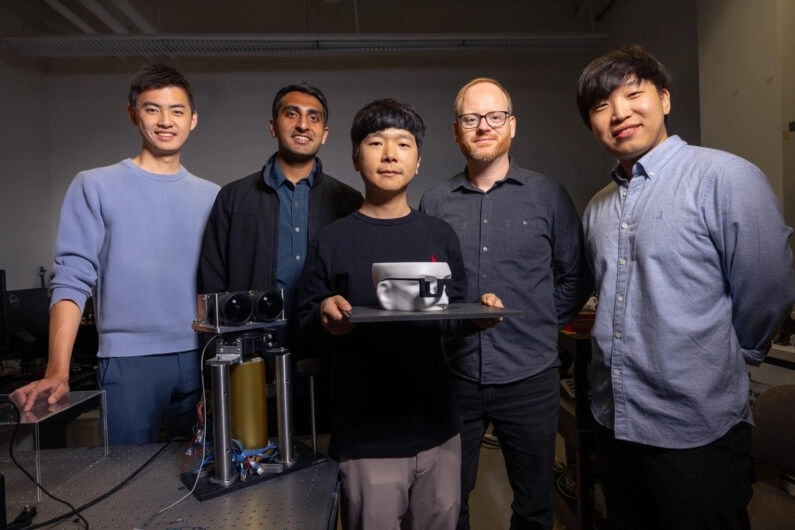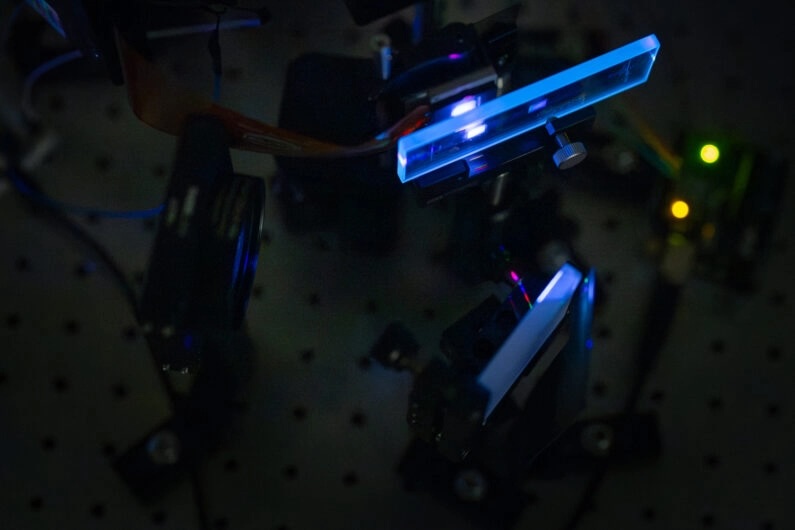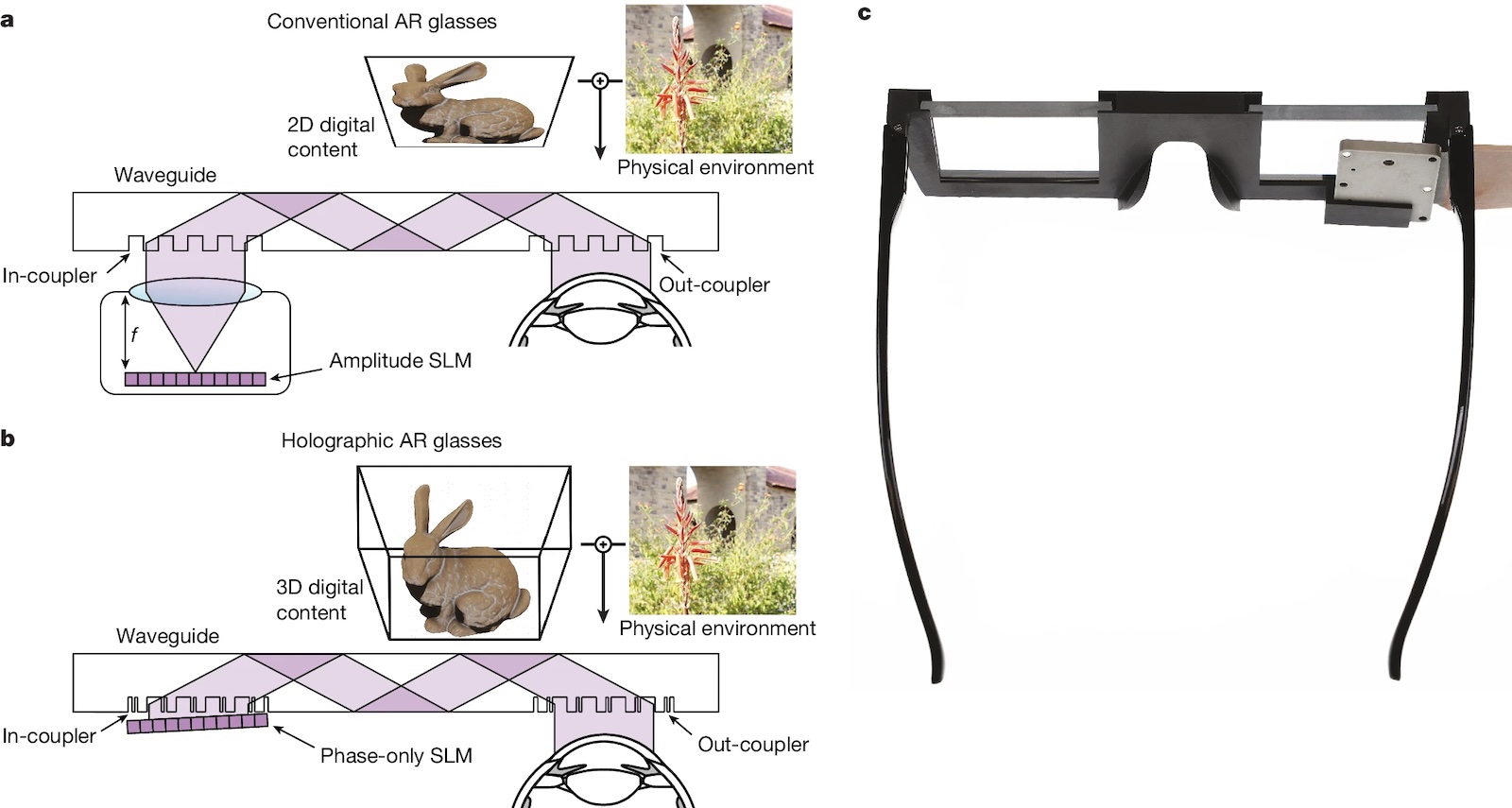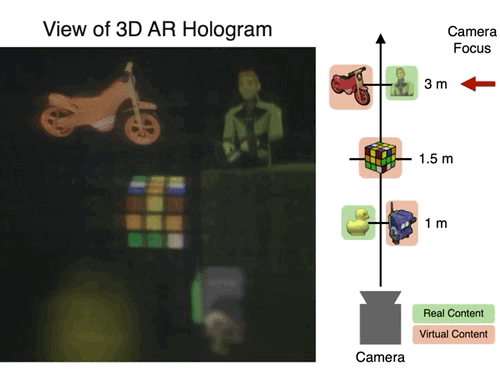AI Summary
Researchers at Stanford developed a prototype 3D holographic augmented reality (AR) headset using AI, nanophotonics, and waveguide display technologies. The compact, comfortable, and stylish headset provides a visually stunning 3D experience by overlaying full-color, 3D moving images on the lenses of ordinary glasses, overcoming limitations in existing AR headsets such as bulkiness and visual discomfort.
have combined advancements in display technologies, holographic imaging, and artificial intelligence to create a prototype augmented reality (AR) headset that delivers a visually stunning 3D experience in a compact, comfortable, and stylish form factor. This breakthrough could revolutionize various fields, from gaming and entertainment to training and education.
The Challenges of Current AR Systems
Existing AR headsets often face limitations that hinder their widespread adoption. They are typically bulky, uncomfortable to wear for extended periods, and may not provide a satisfactory 3D visual experience. Some systems rely on cameras mounted on the exterior of the headset to capture the real world and blend it with computed imagery, resulting in a digitized approximation rather than true augmented reality. These limitations can lead to visual discomfort and a lack of perceptual realism.
Overcoming Barriers with AI and Holography
To address this issue, the researchers employed AI to improve the depth cues in the holographic images. They then utilized advances in nanophotonics and waveguide display technologies to project computed holograms onto the lenses of the glasses without relying on bulky additional optics. This breakthrough allows the user to see both the real world and full-color, 3D computed images seamlessly overlaid on top.
Researchers in the emerging field of spatial computing have developed a prototype augmented reality headset that uses holographic imaging to overlay full-color, 3D moving images on the lenses of what would appear to be an ordinary pair of glasses. Unlike the bulky headsets of present-day augmented reality systems, the new approach delivers a visually satisfying 3D viewing experience in a compact, comfortable, and attractive form factor suitable for all-day wear.
Gordon Wetzstein, an associate professor of electrical engineering and an expert in the fast-emerging field of spatial computing, said:
Our headset appears to the outside world just like an everyday pair of glasses, but what the wearer sees through the lenses is an enriched world overlaid with vibrant, full-color 3D computed imagery. Holographic displays have long been considered the ultimate 3D technique, but it’s never quite achieved that big commercial breakthrough. Maybe now they have the killer app they’ve been waiting for all these years.
Enhancing the 3D Effect
The AR headset delivers an enhanced 3D effect by combining stereoscopic and holographic techniques. Each eye receives a slightly different image, as in traditional 3D imaging, while holography provides a full 3D volume in front of each eye, increasing the life-like quality of the visuals. This approach results in a true-to-life 3D experience that is visually satisfying without causing fatigue, a common challenge in earlier AR systems.
(a) Conventional AR glasses use amplitude SLMs which require a projector-based light engine that is typically at least as thick as the focal length f of the projection lens.
(b) The design of our holographic AR glasses uses a phase-only SLM that can be mounted very close to the in-coupling grating, thereby minimizing the device form factor.
(c) Compact 3D-printed prototype illustrating the components of our holographic AR glasses in a wearable form factor.
Potential Applications and Impact
The potential applications of this groundbreaking AR technology are vast. From gaming and entertainment to training and education, this compact and visually impressive headset could transform the way we interact with and perceive the world around us. Imagine a surgeon wearing these glasses to plan a delicate surgery or an airplane mechanic using them to learn how to work on the latest jet engine. The possibilities are endless.
The combination of AI, holography, and nanophotonic waveguides in this prototype AR headset represents a significant leap forward in the field of spatial computing. By delivering a visually stunning 3D experience in a compact and comfortable form factor, this technology has the potential to become the killer app that holographic displays have been waiting for. As research continues and the technology matures, we can expect to see a wide range of innovative applications that will change the way we live, work, and learn.
Full paper published in
Nature:
Full-colour 3D holographic augmented-reality displays with metasurface waveguidesRecent Posts



